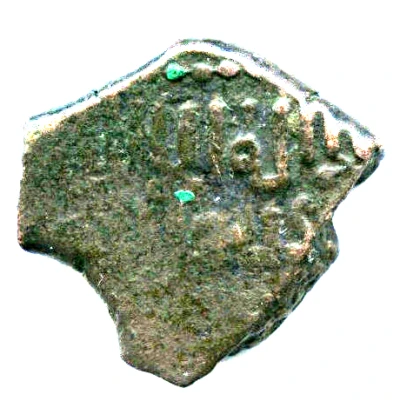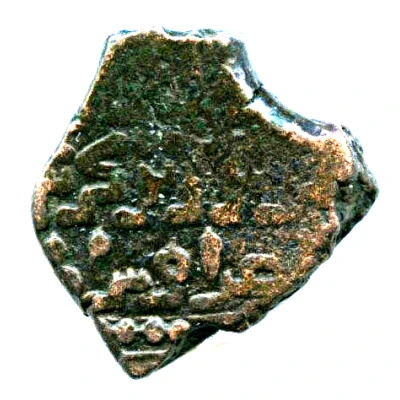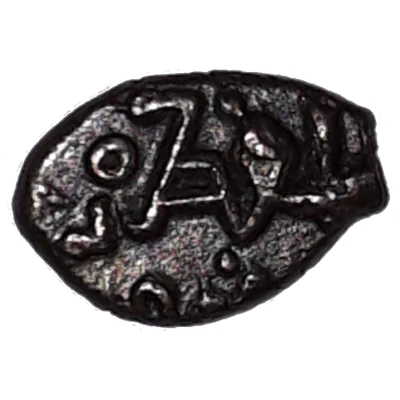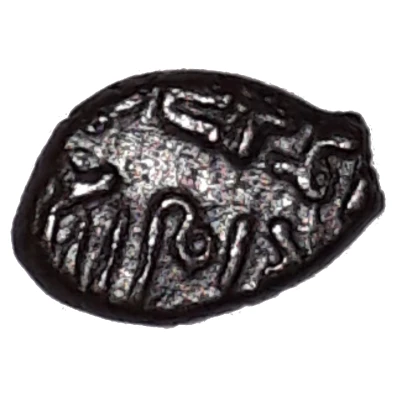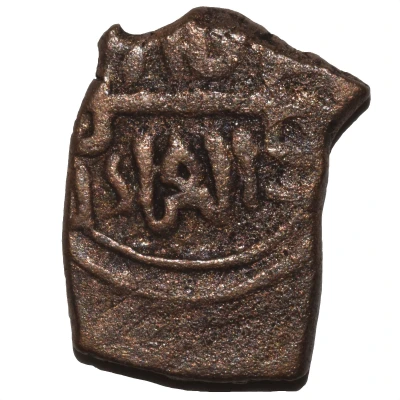
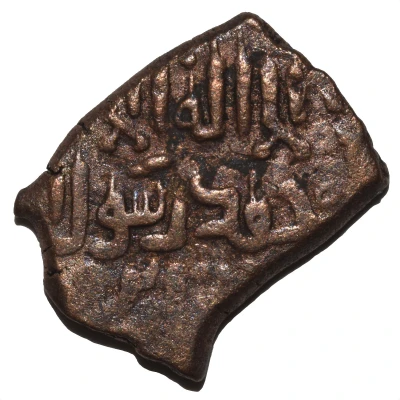

© Cuthwellis
Fals - Akhsitan II with tamgha ND
| Copper | 3.58 g | 18 mm |
| Issuer | Shirvanshah dynasty (Islamic Caucasia) |
|---|---|
| Shah | Akhsitan II (1243-1260) |
| Type | Standard circulation coin |
| Years | 1251-1259 |
| Value | 1 Fals (1⁄60) |
| Currency | Dinar (799-1607) |
| Composition | Copper |
| Weight | 3.58 g |
| Diameter | 18 mm |
| Thickness | 1.5 mm |
| Shape | Irregular |
| Orientation | Coin alignment ↑↓ |
| Demonetized | Yes |
| Updated | 2024-10-05 |
| Numista | N#191862 |
|---|---|
| Rarity index | 92% |
Reverse
Kalima followed by the ruler titulature ; year written in full at top and bottom.
Script: Arabic
Lettering:
...
لا إلها إلى الله
محمد رسول الله
خصتا بين فريبورز
...
Translation:
La illaha illa allah / muhammad rasul Allah / Akhsatan bin Fariburz :
There is no god but Allah. Muhammad is the Messenger of Allah. Akhsatan, son of Fariburz.
Edge
Plain
Comment
Citing Möngke, the khan of the Mongol Empire, as overlord.Interesting fact
One interesting fact about this coin is that it features a unique blend of Islamic and Caucasian influences in its design. The tamgha symbol on the coin, which resembles a stylized letter "T," is a traditional Caucasian motif that was used by the Shirvanshahs to signify their authority and connection to the region's pre-Islamic traditions. At the same time, the coin's inscriptions are in Arabic, reflecting the Islamic faith of the ruling dynasty and the broader cultural influence of the Islamic world in the region. This blending of styles and influences is a hallmark of the Shirvanshah dynasty's coinage and speaks to the rich cultural heritage of the Caucasus region.
